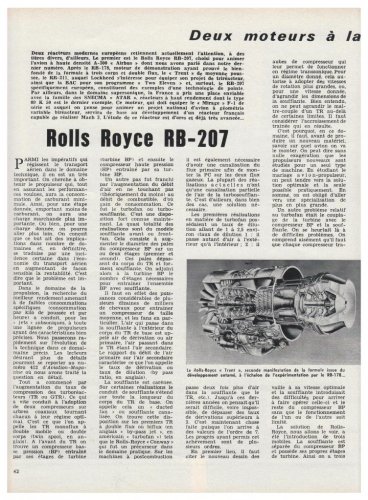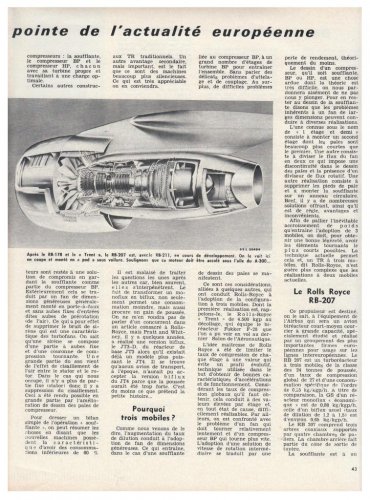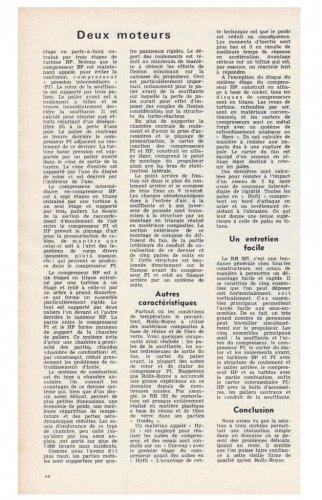- Joined
- 30 November 2007
- Messages
- 1,126
- Reaction score
- 592
Dear Boys and Girls, here is an article in French about the Rolls-Royce RB.178 turbofan prototype which was originally known as the "Super Conway". This was the first large three-shaft commercial high by-pass ratio turbofan designed by Rolls-Royce and it first underwent ground testing in July 1966; it was intended to power the following:-
Hawker-Siddeley HS-132 & HS-134 "projects".
BAC VC-10 DB265 "project". RB.178-14 4:1 by-pass ratio 27,500lbs thrust version.
Bréguet Br.124 "project".
Shorts SC.5/45 "project".
A 6:1 by-pass ratio 44,000lbs thrust version was rejected in favour of the competitive Pratt & Whitney JT9-D turbofan for the Boeing 747 in 1966.
The RB.178 engine was never flight-tested and never went into production as most of the intended applications remained unbuilt "projects". It did lead, however, to the RB.211 engine first used on the Lockheed L-1011 TriStar and the RB.207 engine "project" intended for the abortive original Airbus A-300 "project" of 1967/68......
The article comes from the 1st August 1966 issue of Aviation Magazine International......
Terry (Caravellarella)
Hawker-Siddeley HS-132 & HS-134 "projects".
BAC VC-10 DB265 "project". RB.178-14 4:1 by-pass ratio 27,500lbs thrust version.
Bréguet Br.124 "project".
Shorts SC.5/45 "project".
A 6:1 by-pass ratio 44,000lbs thrust version was rejected in favour of the competitive Pratt & Whitney JT9-D turbofan for the Boeing 747 in 1966.
The RB.178 engine was never flight-tested and never went into production as most of the intended applications remained unbuilt "projects". It did lead, however, to the RB.211 engine first used on the Lockheed L-1011 TriStar and the RB.207 engine "project" intended for the abortive original Airbus A-300 "project" of 1967/68......
The article comes from the 1st August 1966 issue of Aviation Magazine International......
Terry (Caravellarella)
Attachments
Last edited by a moderator:




